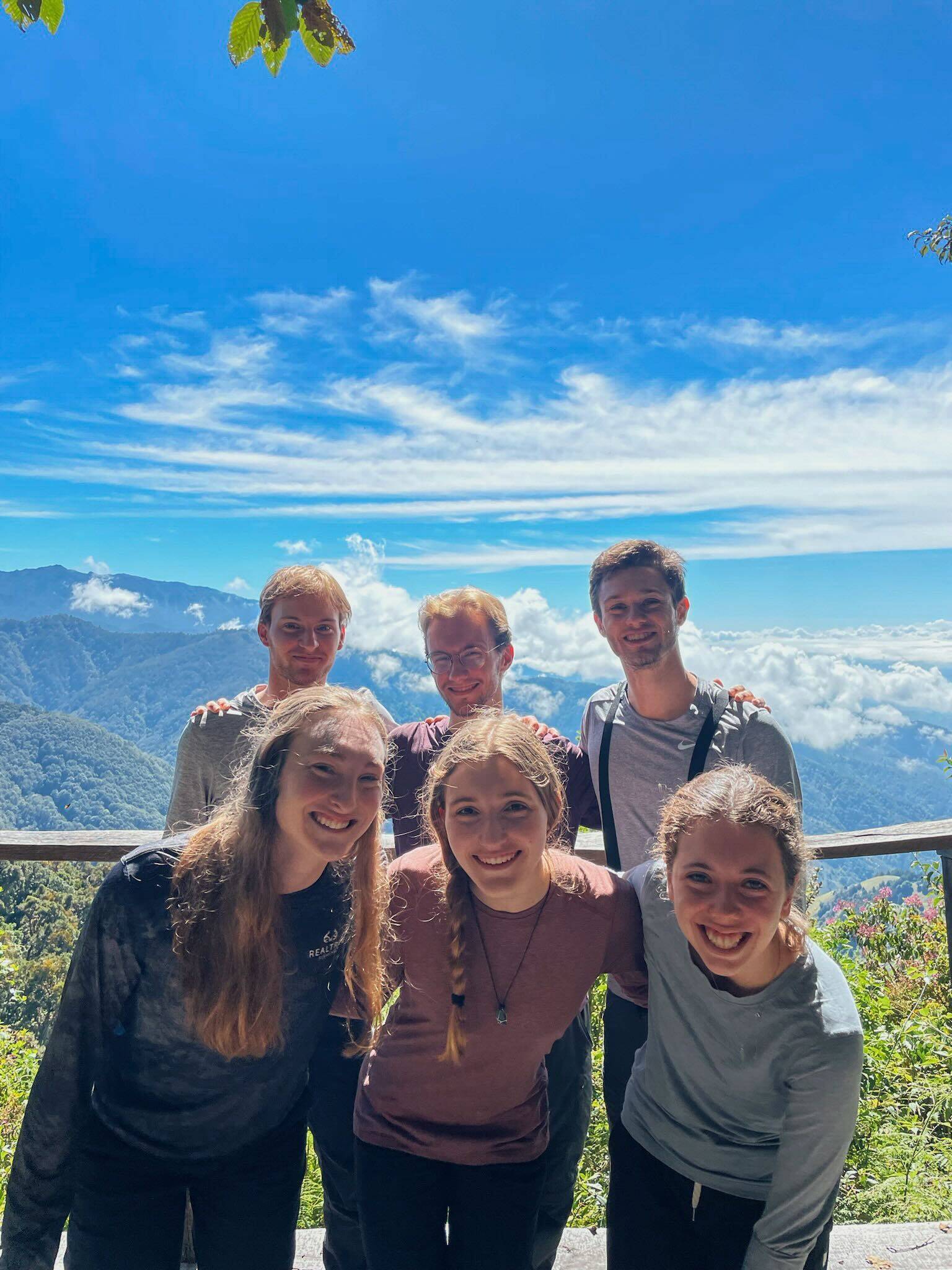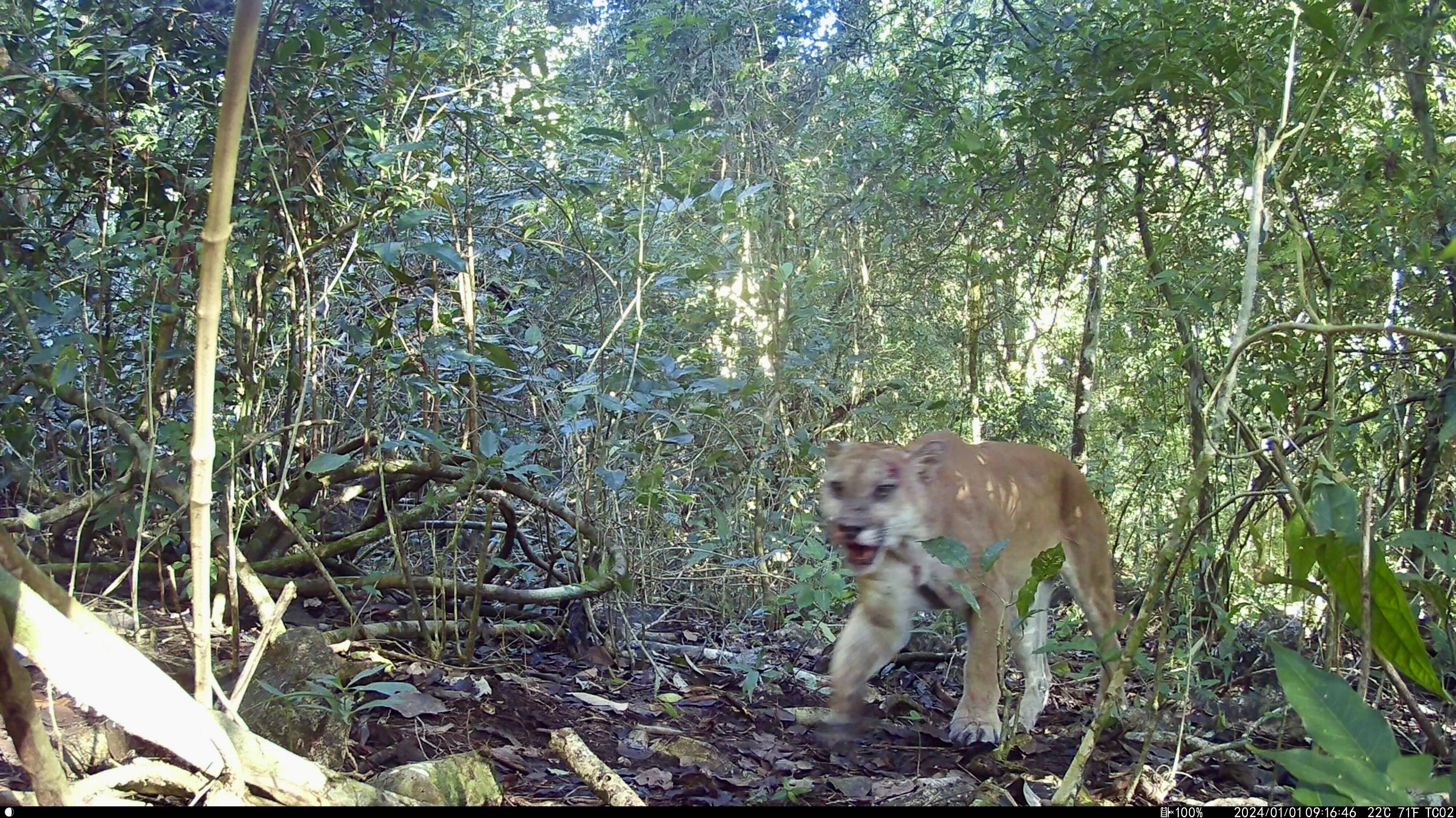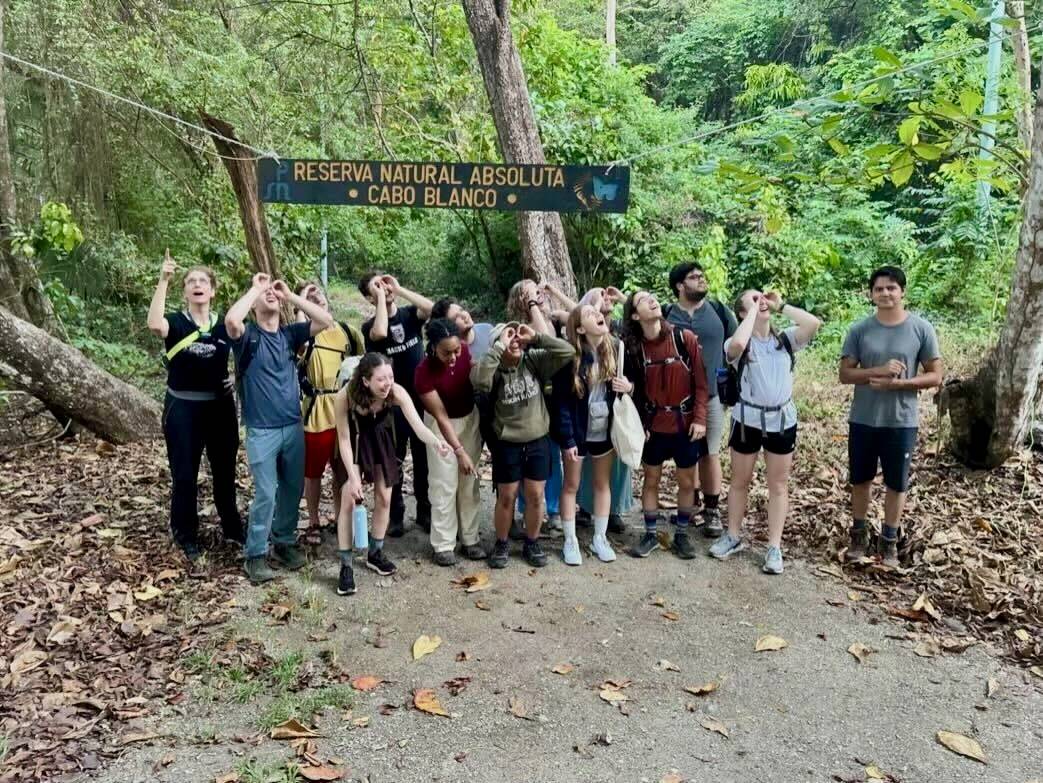Written by Kianna Criscuola ’26, Mary Thomas Powell ’26, and Porter Comstock ’26
Insects, birds, plants, and more — Costa Rica provided no limits to the research and organisms the 13 tropical ecologists (go, ’gate) and Professor Catherine Cardelús were able to explore in the field.
For three weeks, we visited four different field sites: Cabo Blanco (a lowland dry forest), Monteverde (an upper montane cloud forest), La Selva (a lowland rainforest), and Cuericí (a high-elevation evergreen oak forest). At each of the four sites, we divided into four groups, studying either insects, plants, birds, or writing the blog. The students were well prepared to explore and study the various complexities of tropical biology within the field because they spent the fall semester learning in-depth tropical ecological theory and key field methods and developing research project ideas that they hoped to test while there.
And so your burning question might be, “What did the aspiring Tropical Ecologists study?”
All three groups — insects, plants, and birds — conducted both a comparative study across all four sites and within each site examining how plant, bird, and insect species abundance and richness vary across and within the sites. Many of the projects focused on edge habitats and anthropogenic influence on the natural environment.
In addition to studying organisms more broadly across and within the four field sites, we designed independent projects during the semester, to conduct at La Selva Biological Station. We arrived at La Selva full of excitement but quickly learned the unpredictable nature of biological fieldwork.
Despite most groups updating their field methods in light of unforeseen challenges, the budding ecologists continued with their enthusiasm just as before — it’s all part of the learning process and thinking on your feet! It also helps to work with a professor who has an infectious enthusiasm for field work and tropical ecology.
Our research consisted of collecting data in the wee hours of the morning and then analyzing that data into the late hours of the night. Students showed off their hard work and research in a group presentation and final paper.
In La Selva’s arboretum, two groups looked forward to conducting their independent studies on bromeliads, plants that grow on other plants (epiphytes) and are in the same family as the pineapple. One group studied herbivory damage in two different environments, the arboretum and laboratory field clearing, while the other group studied functional characteristics — water tank temperature, number of leaves, etc. — of bromeliads across a light gradient. Both groups enjoyed using quantum light sensors, a chlorophyll-content meter, and a leaf-area meter as well as the various lab facilities that La Selva Biological Station had to offer.
Another group was eager to study animals in Costa Rica with a specific interest in birds and their roles as pollinators. They measured how nectar characteristics, such as glucose concentration and volume, and hummingbird visitation change with different amounts of leaf damage. The last group experimentally studied the impact of population density on predation reaction times.
When we were not collecting or analyzing data, we had the opportunity to explore the habitats in new ways through snorkeling, white water rafting, chocolate tours, ziplining, hiking, and crossing hanging bridges. We set up camera traps in the canopy and forest floor, and we were thrilled to see capuchin monkeys, kinkajous, and porcupines in the canopy and pumas, ocelots, and tapirs on the forest floor. We also saw Toucans, three species of monkeys (spider, capuchin, and howler monkeys), sloths, quetzals, bullet ants, and even a fer-de-lance with our own eyes.
On the last night of our trip to Cuerici, we reflected on the skills we developed and the friendships forged. From asking more pointed research questions to nailing running statistics in R, to writing more pithily, we left Costa Rica equipped to tackle any undergraduate or graduate research projects.
The tropical ecology 2023–2024 class would like to thank Catherine Cardelús for her guidance, encouragement, and rigor and Jeremy Quirós Navarro, our teaching assistant, for his expertise and knowledge.
Want to learn more about our trip? Check out our blog or this video by Mary Thomas Powell ’26.


